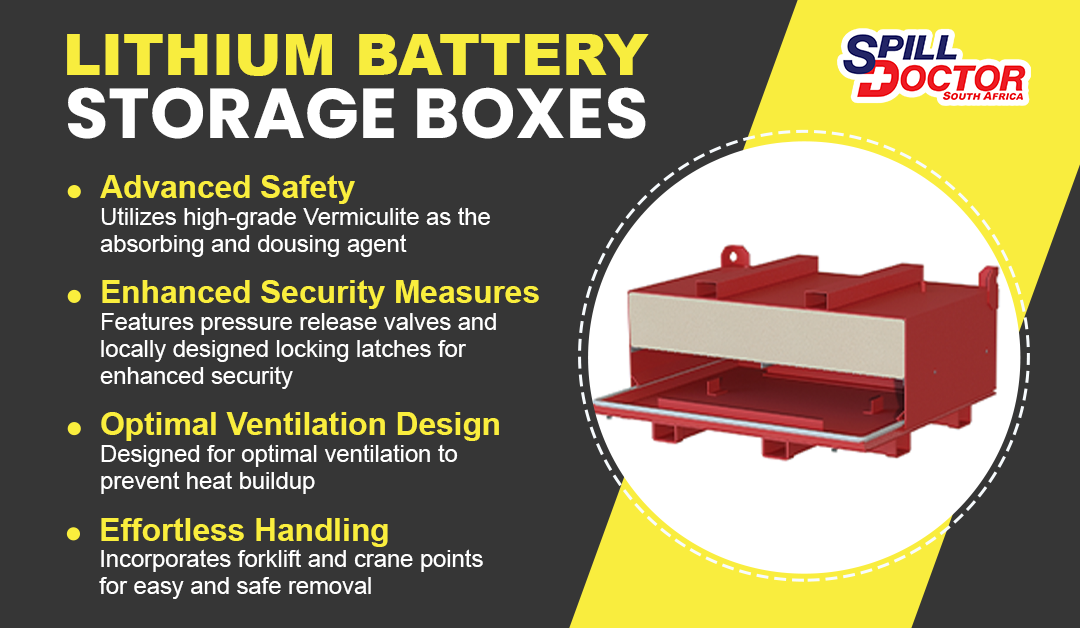
What is the Importance of Safety Cans in the Workplace?
Safety cans are crucial in maintaining workplace safety, especially in environments where flammable liquids are used or stored. They are designed to safely contain hazardous materials, thereby minimizing the risk of fires and explosions. Safety cans prevent spills and reduce the likelihood of vapours igniting, which can cause severe accidents. At Spill Doctor South Africa, we understand the importance of these safety measures and offer a wide range of safety cans to help businesses comply with safety regulations and protect their employees.
What are the Different Types of Safety Cans and Their Uses?
There are several types of safety cans, each suited to specific applications:
Type I Safety Cans: These have a single opening for both filling and pouring. They are ideal for small-scale use where pouring accuracy is not critical.
Type II Safety Cans: These feature two openings: one for filling and one for pouring, which includes a flexible metal spout for precise dispensing. They are perfect for applications requiring accurate and controlled pouring.
Each type of safety can is equipped with features such as flame arrestors, self-closing lids, and pressure relief mechanisms to ensure maximum safety. At Spill Doctor South Africa, we supply both Type I and Type II safety cans, designed to meet the diverse needs of various industries.
How to Properly Use and Maintain Safety Cans?
Proper use and maintenance of safety cans are essential to ensure their effectiveness and longevity. Here are some tips:
Filling: Always fill safety cans to the recommended level, typically about 95% full, to allow for expansion of the liquid.
Pouring: Use the correct technique to avoid spills and splashes. For Type II cans, use the flexible spout for controlled pouring.
Storage: Store safety cans in a cool, well-ventilated area away from sources of ignition.
Maintenance: Regularly inspect safety cans for signs of wear, corrosion, or damage. Replace any compromised parts immediately.
At Spill Doctor South Africa, we provide guidance on the proper use and maintenance of our safety cans to help you get the most out of your investment.
What are the Regulatory Standards for Safety Cans in South Africa?
Safety cans must comply with various local and international standards to ensure they provide adequate protection. In South Africa, safety cans must adhere to standards such as those set by the Occupational Health & Safety Administration (OHSA), the National Fire Protection Association (NFPA), and the South African Bureau of Standards (SABS). These standards dictate the construction, performance, and labelling of safety cans to ensure they are suitable for storing flammable liquids.
At Spill Doctor South Africa, all our safety cans meet or exceed these stringent regulatory standards, providing you with reliable and compliant storage solutions.
What are the Common Mistakes to Avoid When Using Safety Cans?
Misusing safety cans can negate their safety benefits. Here are some common mistakes to avoid:
Overfilling: This can cause spills and increase the risk of vapour release.
Using Damaged Cans: Even minor damage can compromise the safety of a can. Regular inspections are crucial.
Improper Storage: Storing safety cans near heat sources or in areas with poor ventilation can increase the risk of accidents.
Mixing Liquids: Always use separate safety cans for different types of liquids to prevent chemical reactions.
By choosing Spill Doctor South Africa, you get access to high-quality safety cans and expert advice to help you avoid these common pitfalls.
What are the Benefits of Using Safety Cans for Hazardous Liquid Storage?
Safety cans offer numerous benefits for storing hazardous liquids:
Enhanced Safety: Safety cans are designed to prevent spills, control vapour release, and minimize fire risks.
Compliance: Using certified safety cans helps businesses comply with health and safety regulations.
Durability: Made from robust materials, safety cans are built to withstand harsh conditions and prolonged use.
Cost-Effectiveness: By preventing accidents and prolonging the life of stored liquids, safety cans can save businesses money in the long run.
At Spill Doctor South Africa, we supply a comprehensive range of safety cans that provide these benefits, ensuring the safe and efficient storage of hazardous liquids in your workplace.
In conclusion, safety cans are an indispensable part of maintaining a safe workplace environment. At Spill Doctor South Africa, we are committed to providing high-quality safety solutions, including a wide variety of safety cans that meet all regulatory standards. Contact us today to learn more about our products and how they can enhance your workplace safety.






